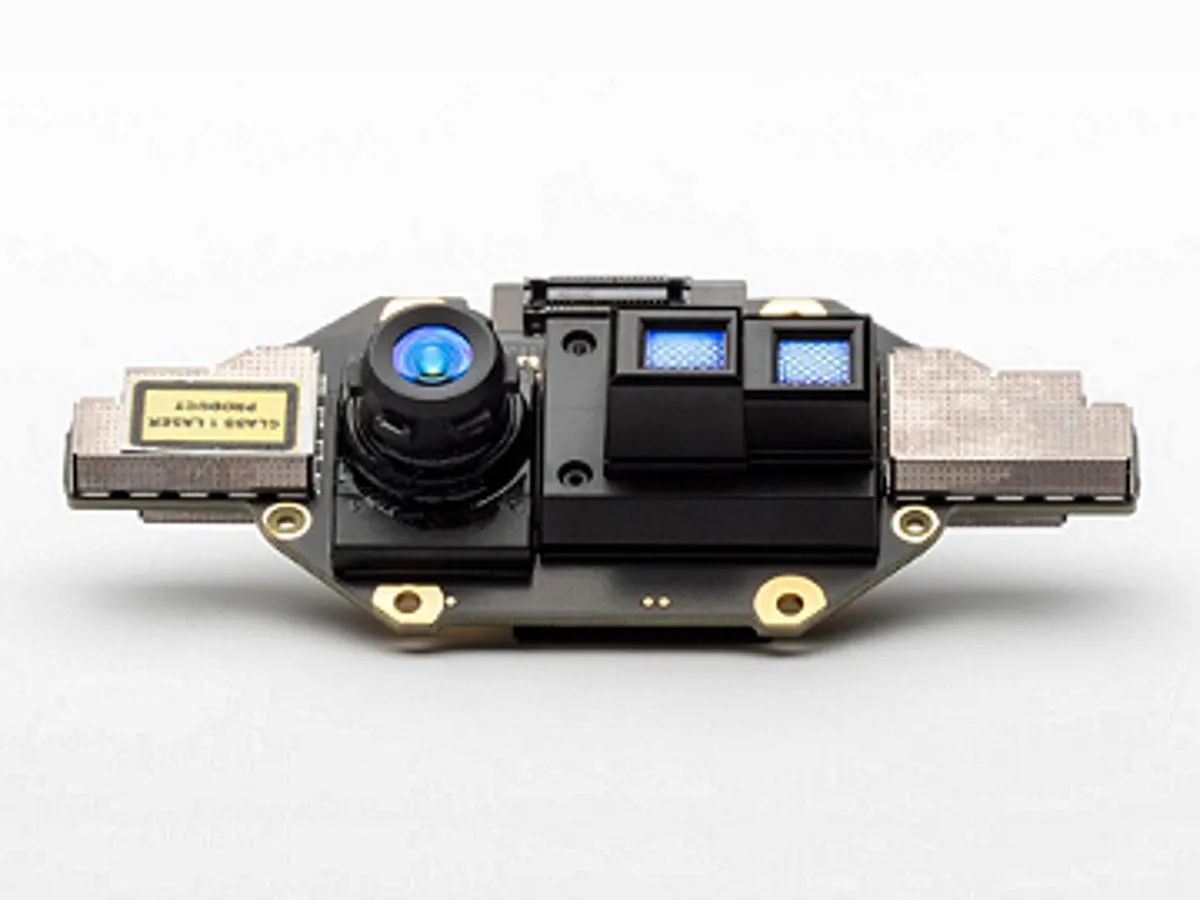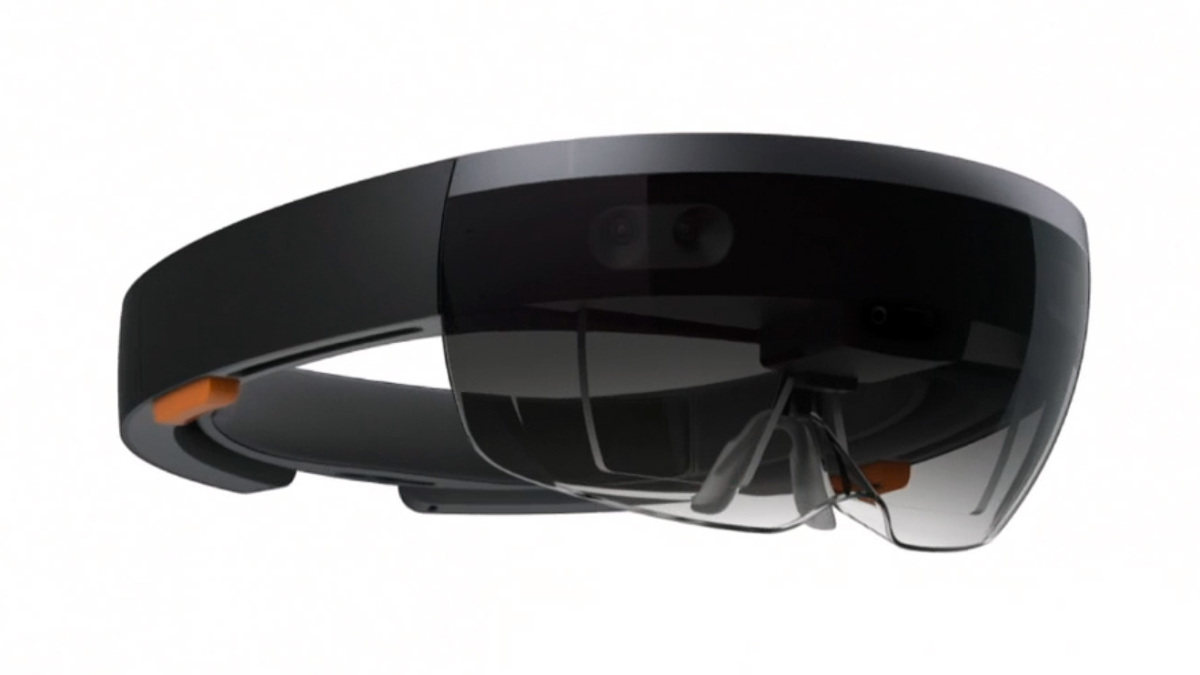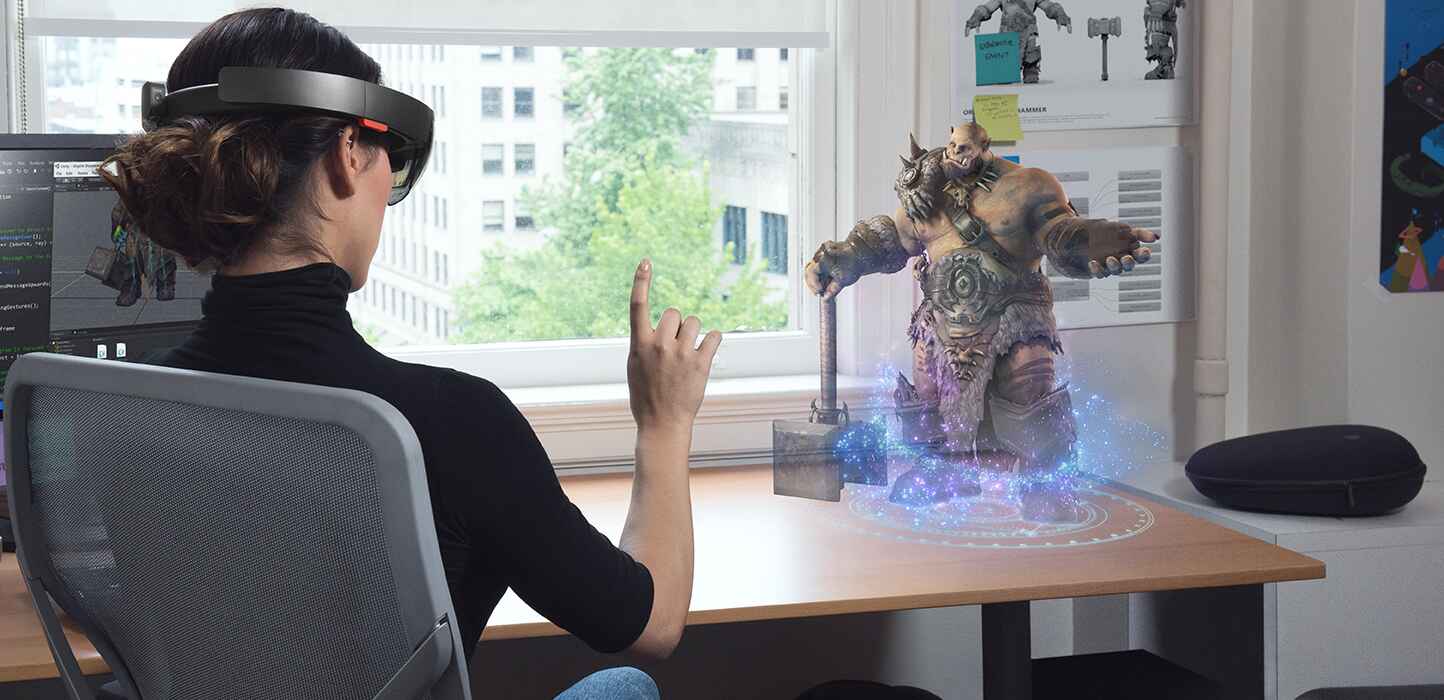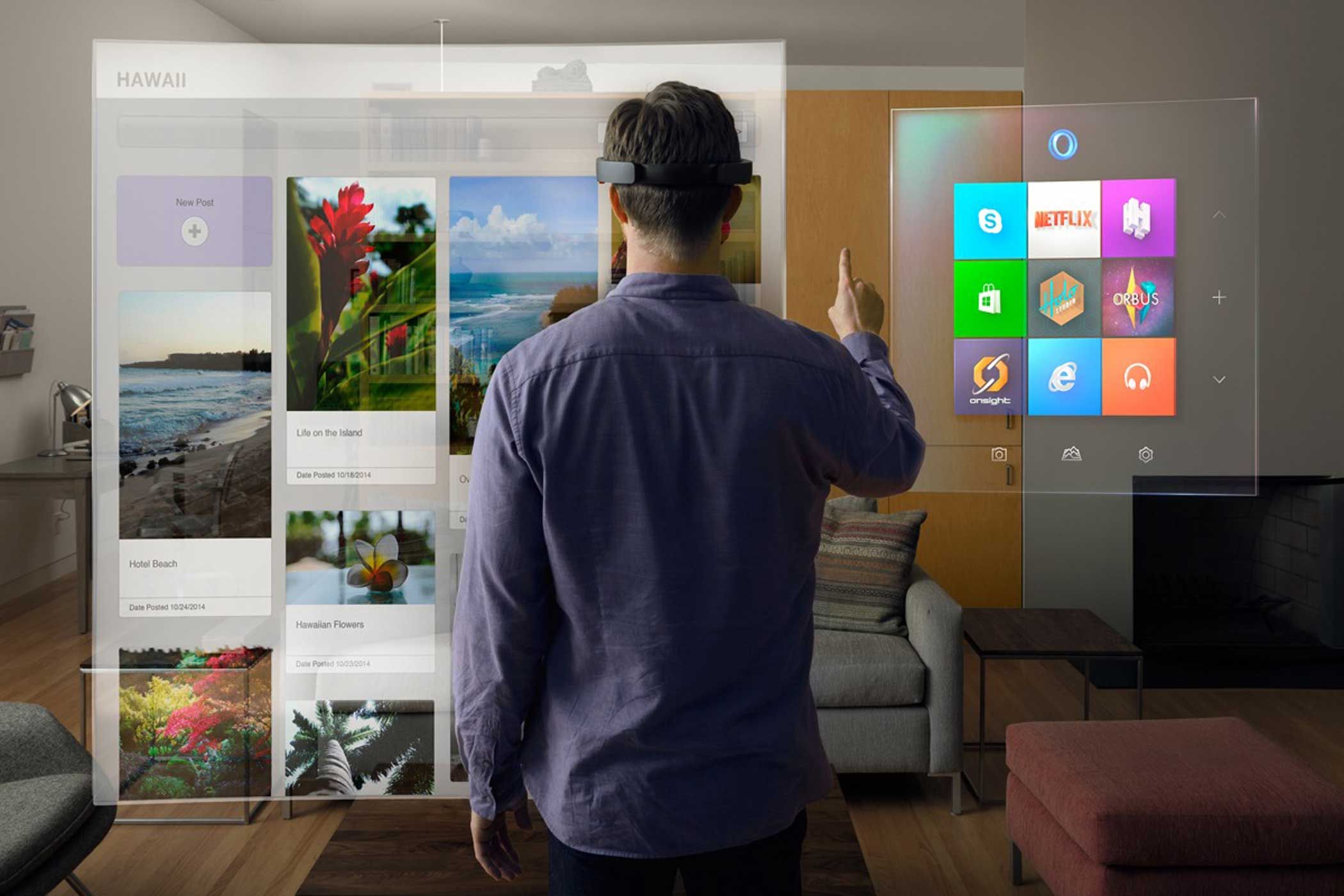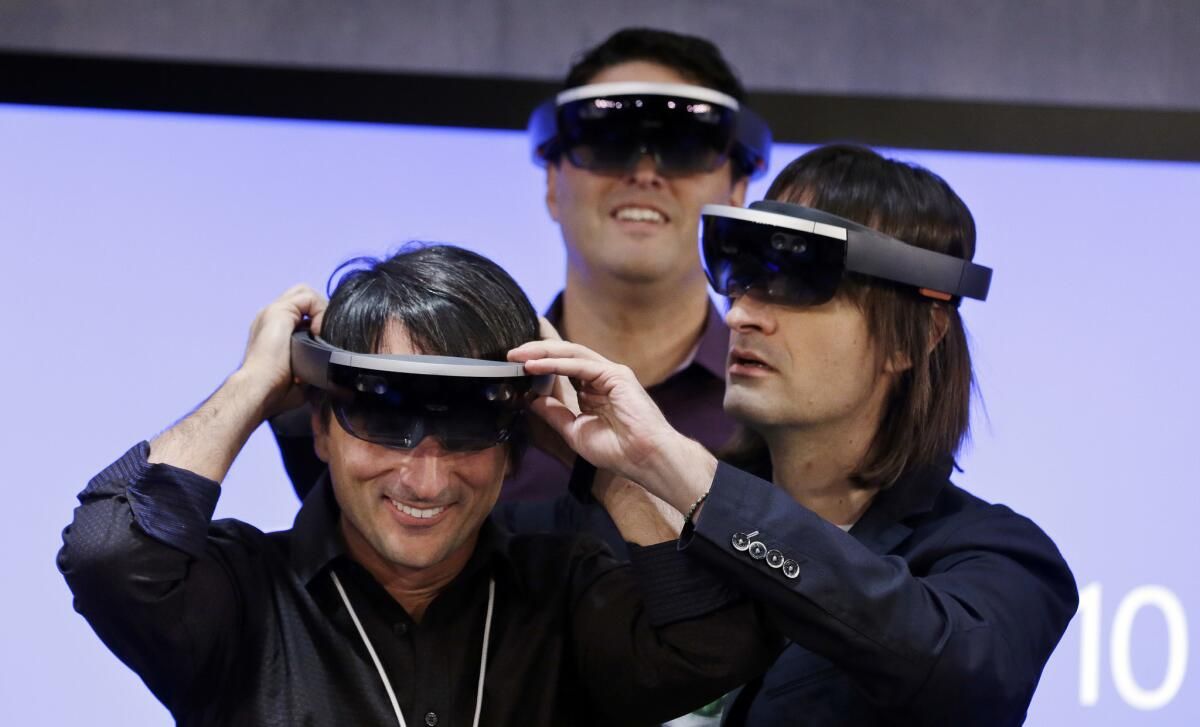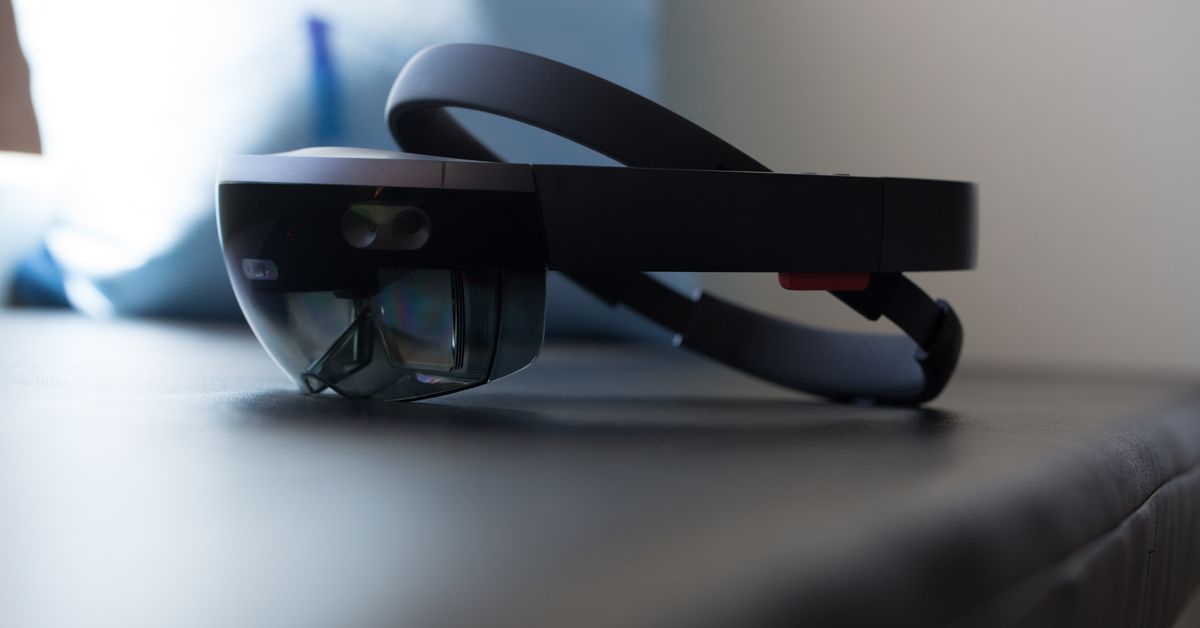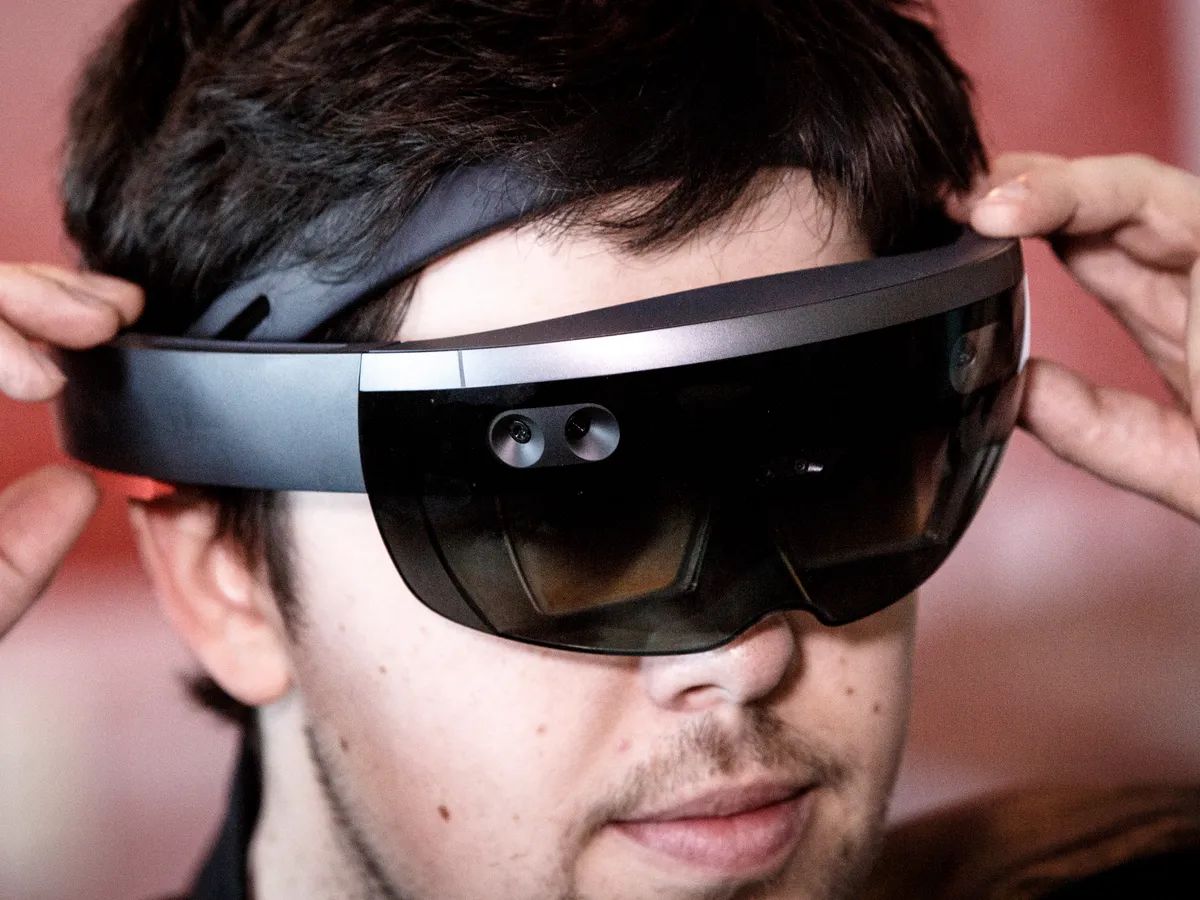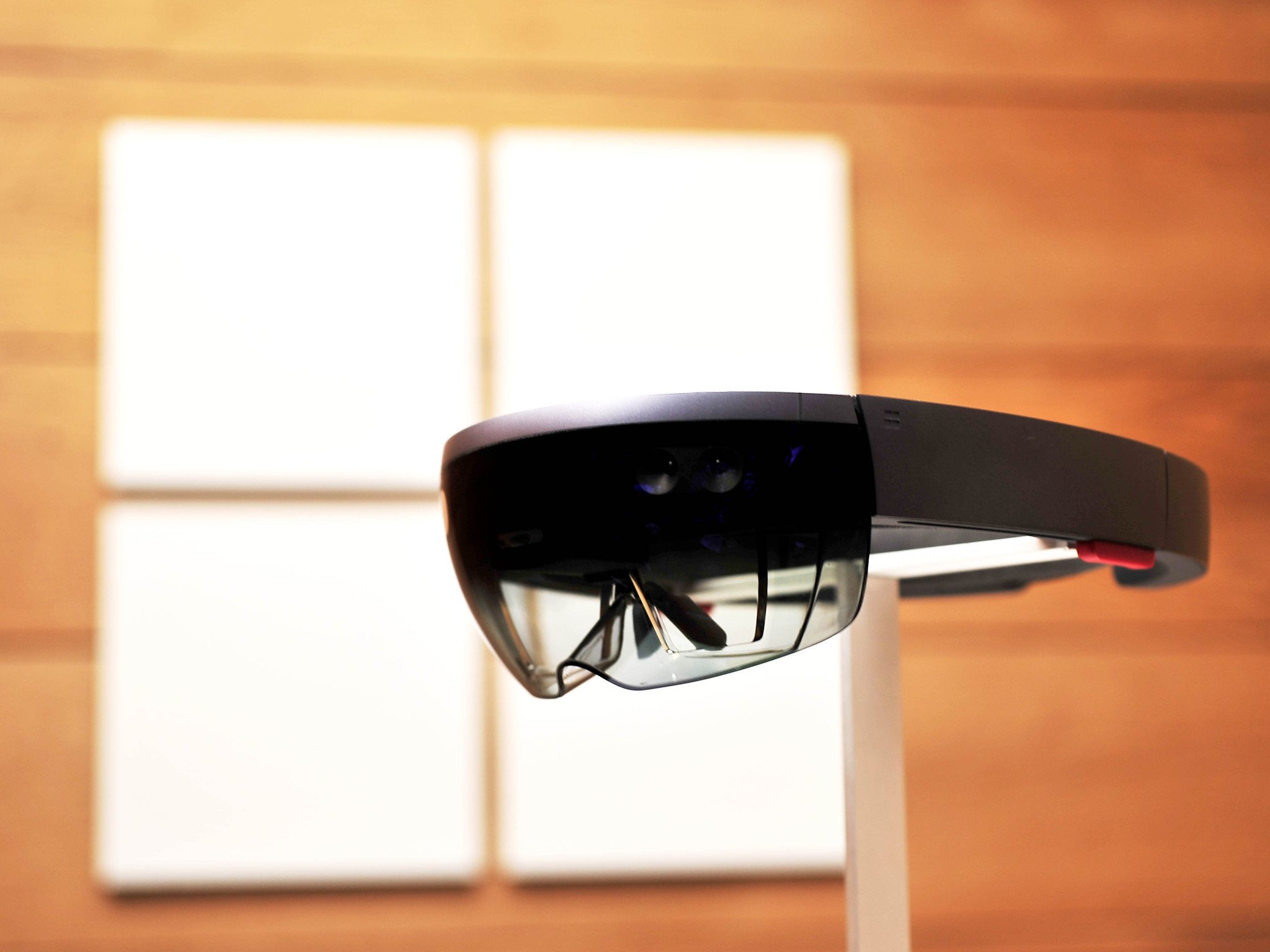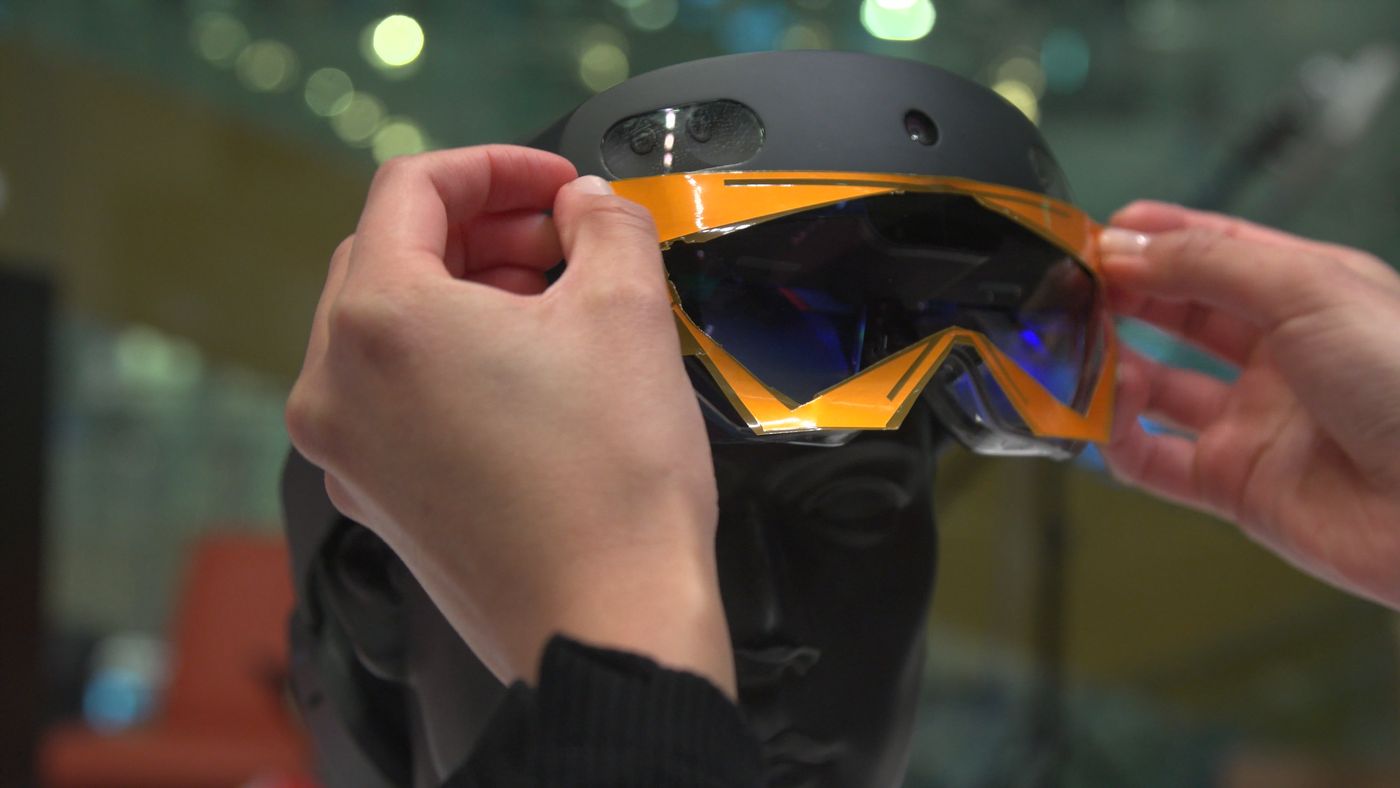Overview of the HoloLens Sensor
The HoloLens, developed by Microsoft, is an innovative mixed reality device that brings holographic experiences to life. At the core of the HoloLens lies a sophisticated sensor array, providing users with a seamless and immersive experience. These sensors work together to track movement, interpret gestures, analyze the environment, and deliver a truly interactive augmented reality experience.
One of the key sensors within the HoloLens is the Spatial Mapping Sensor. This sensor utilizes advanced depth-sensing technology, allowing the device to understand and create a 3D map of the surrounding environment. By scanning the physical space and building a spatial map, the HoloLens can accurately place digital holograms in the user’s real-world environment.
Another important sensor is the Gesture Input Sensor, which enables users to interact with the holograms using hand gestures. This sensor can track hand movements and gestures such as tapping, swiping, and grabbing, providing a natural and intuitive way to control the augmented reality elements.
In addition, the HoloLens features an Eye Tracking Sensor that detects the user’s eye movements and gaze direction. This sensor enhances the user experience by allowing for precise interaction with holograms. For example, users can simply look at a hologram and use hand gestures to manipulate it, creating a truly immersive and intuitive mixed reality experience.
The Depth Sensor is another important component of the HoloLens sensor array. It uses infrared depth-sensing technology to calculate the distance between objects and the user, enabling realistic depth perception within the augmented reality environment. This sensor is crucial for realistic object placement and interaction.
The HoloLens also incorporates an Ambient Light Sensor, which adjusts the brightness and color temperature of the holographic display based on the lighting conditions in the environment. This ensures optimal visibility and color accuracy, providing a realistic and immersive mixed reality experience even in varying lighting conditions.
One of the key sensors that enables precise motion tracking is the Inertial Measurement Unit (IMU) Sensor. It combines inputs from accelerometers, gyroscopes, and magnetometers to accurately track the user’s head movements, allowing for seamless integration of virtual objects with the real world.
Furthermore, the HoloLens features a Microphone Array Sensor, which enables voice commands and clear audio input. This sensor enhances the natural interaction with the device, allowing users to control holograms, make phone calls, and interact with digital assistants effortlessly.
All of these sensors within the HoloLens work together seamlessly, creating a cohesive and immersive mixed reality experience. They enable users to interact and manipulate holograms in a natural and intuitive manner, blurring the lines between the physical and digital worlds.
Understanding the Spatial Mapping Sensor
The Spatial Mapping Sensor is a crucial component of the HoloLens sensor array, enabling the device to understand and interact with the user’s physical environment in a mixed reality experience. This sensor utilizes advanced depth-sensing technology to create a detailed 3D map of the surrounding space.
By continuously scanning the environment, the Spatial Mapping Sensor captures depth information using a combination of cameras, lasers, and infrared sensors. It then processes this data to generate a digital representation of the physical surroundings, creating a mesh-like 3D map in real-time.
This 3D map consists of millions of points, each representing a specific location within the environment. These points, called spatial vertices, form a dense mesh that accurately reflects the contours and geometry of the physical objects in the user’s surroundings.
Once the spatial map is created, the HoloLens uses this information to anchor virtual holograms onto real-world objects. By analyzing the spatial vertices and aligning them with the physical environment, the device can accurately place digital content, such as holograms or virtual objects, onto surfaces and spaces within the environment.
The Spatial Mapping Sensor not only provides a means for precise placement of virtual objects but also enables realistic occlusion. Occlusion is the ability of holograms to appear behind or obscured by real-world objects. The HoloLens leverages the spatial map to determine the appropriate occlusion points, ensuring that holograms appear realistic and seamlessly integrated with the physical environment.
In addition to anchoring holograms, the spatial map also allows for spatial awareness and interaction. The HoloLens can detect surfaces, such as walls, tables, and floors, and provide information about their dimensions and orientation. This enables users to interact with the spatial map, for example, by placing virtual objects onto specific surfaces or manipulating them in relation to the physical environment.
Furthermore, the spatial map can be updated dynamically as the user moves through the environment. The HoloLens continually scans the surroundings, adjusting the spatial map to reflect any changes in real-time. This ensures that holograms remain accurately placed, even if the user shifts position or the physical environment undergoes alterations.
The Spatial Mapping Sensor is a key component that enables the HoloLens to create a seamless mixed reality experience by understanding and mapping the physical environment. It allows for precise placement of holograms, occlusion with real-world objects, and interaction with the virtual content. This sensor plays a vital role in blurring the lines between the physical and digital worlds, providing users with immersive and interactive augmented reality experiences.
Exploring the Gesture Input Sensor
The Gesture Input Sensor is a critical component of the HoloLens sensor array, allowing users to interact with holographic content using natural hand gestures. This sensor employs a combination of depth sensing, infrared technology, and advanced algorithms to accurately track and interpret the user’s hand movements.
By capturing the position and movement of the user’s hands in real-time, the Gesture Input Sensor enables a seamless and intuitive control mechanism for augmented reality experiences. It tracks gestures such as tapping, swiping, pinching, and grabbing, translating them into commands that manipulate the virtual content within the mixed reality environment.
The Gesture Input Sensor utilizes a combination of cameras and infrared sensors to detect the user’s hands. It leverages depth sensing technology to create a 3D model of the hand, allowing for precise tracking and recognition of different hand poses and gestures.
One of the key advantages of the Gesture Input Sensor is its ability to provide natural interaction. Rather than relying on external controllers or physical touchscreens, users can simply use their hands to manipulate the holographic content. This translates to a more immersive and intuitive experience, as users can directly interact with virtual objects as if they were interacting with physical objects in the real world.
The Gesture Input Sensor also supports multi-gesture recognition, allowing for complex interactions. For example, users can perform a pinching gesture to select an object, followed by a grabbing gesture to move and resize it. This level of gesture recognition provides users with a wide range of ways to interact with holograms, enabling dynamic and versatile interactions within the mixed reality environment.
In addition to hand gestures, the Gesture Input Sensor also recognizes head gestures. For example, users can nod their heads or shake them to trigger specific actions or navigate through menus. This feature adds another layer of interactivity and control to the HoloLens experience, providing additional options for users to engage with the content.
Furthermore, the Gesture Input Sensor allows for real-time feedback and visual cues. The HoloLens can display virtual representations of hands or gesture trails, providing users with a visual indication of their hand movements. This visual feedback enhances the user experience, ensuring that users can accurately perceive their gestures and interactions within the augmented reality environment.
The Gesture Input Sensor is a key component of the HoloLens, enabling natural and intuitive interaction with holographic content. By tracking and interpreting hand and head gestures, users can seamlessly control and manipulate virtual objects within the mixed reality environment. This sensor plays a vital role in delivering a user-friendly and immersive augmented reality experience.
The Eye Tracking Sensor: How Does It Work?
The Eye Tracking Sensor is a sophisticated component of the HoloLens sensor array that enables precise tracking and interpretation of the user’s eye movements and gaze direction. This sensor plays a crucial role in enhancing the user experience by allowing for intuitive and accurate interaction with holographic content.
The Eye Tracking Sensor employs a combination of cameras, infrared technology, and advanced algorithms to track the movement and position of the user’s eyes. By capturing the location of the pupils and the direction of gaze, the sensor can determine where the user is looking within the mixed reality environment.
The Eye Tracking Sensor utilizes infrared light and a specialized camera lens to illuminate and capture the reflection of infrared light off the user’s eyes. This enables the sensor to accurately track the position of the pupils, providing precise information about the user’s eye movements.
The captured eye-tracking data is then processed by intelligent algorithms, which analyze the movement and position of the pupils to determine the user’s gaze direction. This information is invaluable for interacting with holograms, as it allows the HoloLens to understand where the user is looking and respond accordingly.
One of the key advantages of the Eye Tracking Sensor is its ability to enable natural interactions and identify points of interest. For example, users can simply look at a hologram and use hand gestures to interact with it, without the need for additional input devices or controllers. The HoloLens can detect the user’s focus on a specific hologram and trigger appropriate actions or responses based on that information.
The Eye Tracking Sensor also facilitates enhanced visual rendering within the mixed reality environment. By tracking the user’s gaze direction, the HoloLens can apply dynamic rendering techniques to display high-resolution imagery and detail at the point of focus, while reducing rendering quality in peripheral areas. This not only enhances the visual quality and realism of holograms but also helps optimize system performance and extend battery life.
In addition to gaze tracking, the Eye Tracking Sensor can also detect blinks and pupil dilation. These features provide additional means of interaction and control within the mixed reality environment. Users can perform specific eye-based actions, such as blinking to select an object or adjusting the size of virtual content based on pupil dilation.
The Eye Tracking Sensor also has potential applications in eye-based biometric authentication. As each person has a unique pattern of eye movement, iris structure, and other characteristics, eye-tracking data could be used as a secure form of user identification and authentication.
Overall, the Eye Tracking Sensor is a vital component of the HoloLens sensor array, enabling precise tracking and interpretation of the user’s eye movements and gaze direction. By understanding and responding to the user’s visual focus, this sensor enhances the interactive and immersive nature of the mixed reality experience.
Using the Depth Sensor for Mixed Reality
The Depth Sensor is a fundamental component of the HoloLens sensor array that plays a pivotal role in creating a realistic and immersive mixed reality experience. This sensor uses advanced depth-sensing technology to provide accurate depth perception within the augmented reality environment.
The Depth Sensor employs a combination of infrared sensors and cameras to measure the distance between objects and the user. By emitting and detecting infrared light, the sensor calculates the time it takes for the light to travel and reflect back from the surrounding objects. This information is then processed to generate a depth map, which represents the distance of each point in the environment from the HoloLens device.
By leveraging the depth map, the HoloLens is able to accurately place virtual objects onto real-world surfaces and spaces. This enables users to perceive digital holograms as if they are seamlessly integrated with the physical environment. For example, users can place virtual furniture on the floor or hang virtual artwork on the walls, and these holograms will appear to interact with the real-world objects or surfaces, creating a convincing mixed reality experience.
The Depth Sensor also plays a crucial role in realistic occlusion. Occlusion refers to the ability of virtual objects to appear behind or obscured by real-world objects. This effect greatly enhances the immersion and believability of the mixed reality experience. By understanding the depth map, the HoloLens can accurately determine which parts of the virtual content should be occluded by physical objects, creating a seamless integration of the virtual and real environments.
In addition to object placement and occlusion, the Depth Sensor allows for spatial awareness and interaction within the mixed reality environment. It provides the HoloLens with information about the dimensions, distances, and orientation of real-world surfaces and objects. This enables users to interact with the virtual content in relation to the physical environment. For example, users can align virtual objects with specific surfaces or manipulate them based on their relative position in 3D space.
The Depth Sensor also enables dynamic depth mapping, allowing the HoloLens to adjust and update the depth map as the user moves through the environment. This ensures that the virtual content remains accurately anchored and aligned with the physical environment, even if the user changes position or the surroundings change. It provides a seamless and consistent mixed reality experience, where virtual objects maintain their position and interaction capabilities relative to the user’s perspective.
Overall, the Depth Sensor is a key component that enhances the realism and interaction capabilities of the HoloLens. By providing accurate depth perception, it enables precise object placement, realistic occlusion, spatial awareness, and dynamic depth mapping within the mixed reality environment. This sensor plays a vital role in creating an immersive and believable augmented reality experience.
Delving into the Ambient Light Sensor
The Ambient Light Sensor is a critical component of the HoloLens sensor array that helps optimize the visual experience by adjusting the brightness and color temperature of the holographic display based on the lighting conditions in the environment. This sensor ensures that users can perceive holograms with optimal visibility and color accuracy, regardless of the ambient lighting.
The Ambient Light Sensor utilizes built-in photodiodes or light-sensitive components to measure the intensity and color temperature of the ambient light. This information is then used to dynamically adjust the display settings of the HoloLens, ensuring that holographic content appears appropriately illuminated and visually pleasing to the user.
When the ambient lighting conditions are bright, the Ambient Light Sensor automatically increases the brightness of the holographic display to compensate for the additional light. This prevents the holograms from appearing washed out or dim, making them stand out clearly against the background environment.
Conversely, when the ambient lighting conditions are dim or dark, the Ambient Light Sensor lowers the brightness of the display to avoid overpowering the holographic content. This adjustment helps maintain the contrast between the virtual and real-world elements, creating a more balanced and natural viewing experience.
In addition to brightness adjustment, the Ambient Light Sensor also takes into account the color temperature of the ambient light. Color temperature refers to the perceived “warmth” or “coolness” of light and is typically measured in Kelvin (K). For example, warm light has a lower color temperature, while cool light has a higher color temperature.
The Ambient Light Sensor adjusts the color temperature of the holographic display to match the ambient lighting conditions. This helps ensure that the colors of the holograms appear accurate and consistent with the surrounding environment. For example, if the ambient light has a warm color temperature, the display will adjust to provide a warmer color tone, creating a harmonious blend between the virtual and real-world elements.
The ability of the Ambient Light Sensor to adapt to varying lighting conditions is particularly beneficial in mixed reality scenarios where users may move between different environments with different lighting setups. Whether users find themselves in a brightly lit room, outdoors in natural sunlight, or in a dimly lit space, the Ambient Light Sensor ensures that the holographic content remains visible and visually pleasing.
Overall, the Ambient Light Sensor is an essential component of the HoloLens sensor array that optimizes the visual experience in mixed reality. By dynamically adjusting the brightness and color temperature of the holographic display to match the ambient lighting conditions, this sensor ensures that users can perceive holograms with optimal visibility, contrast, and color accuracy. It plays a crucial role in creating a seamless and immersive augmented reality experience by harmonizing virtual and real-world elements.
The Importance of the Inertial Measurement Unit (IMU) Sensor
The Inertial Measurement Unit (IMU) Sensor is a crucial component of the HoloLens sensor array that plays a fundamental role in tracking and interpreting the user’s head movements within the mixed reality environment. This sensor combines inputs from accelerometers, gyroscopes, and magnetometers to accurately capture and measure the device’s motion and orientation in 3D space.
Accelerometers are responsible for measuring linear acceleration, allowing the HoloLens to detect movements such as tilting, shaking, and linear acceleration in any direction. This information enables the device to accurately capture the user’s head movements, providing a seamless and responsive mixed reality experience.
Gyroscopes, on the other hand, measure angular velocity and rotation, allowing the HoloLens to detect rotation movements such as turning or looking around. By combining the data from the accelerometers and gyroscopes, the IMU Sensor provides an accurate representation of the user’s head orientation and movement within the augmented reality environment.
In addition to accelerometers and gyroscopes, the IMU Sensor also incorporates magnetometers, which measure the Earth’s magnetic field. This allows the HoloLens to determine the device’s azimuth, providing information about its absolute orientation in relation to the Earth’s magnetic north. This feature contributes to more accurate and stable tracking of head movements, enhancing the overall user experience.
The information gathered by the IMU Sensor is crucial for creating a seamless integration between the user’s physical movements and the virtual content within the mixed reality environment. By accurately tracking and interpreting head movements, the HoloLens can align virtual objects with the user’s perspective, ensuring that the holograms appear stable and correctly anchored in relation to the user’s point of view.
The IMU Sensor also plays a significant role in reducing motion sickness in augmented reality experiences. By providing precise and responsive head tracking, the HoloLens can minimize motion-to-photon latency, which is the delay between a user’s head movement and the corresponding adjustment in the virtual content. This instant and accurate tracking helps create a more natural and immersive experience, reducing the risk of motion sickness for users.
Furthermore, the IMU Sensor contributes to the HoloLens’ spatial mapping capabilities. By capturing the user’s movement and orientation, the device can update the spatial map in real-time, ensuring that virtual objects remain accurately placed and aligned with the physical environment. This dynamic mapping capability allows users to move freely within the mixed reality environment without compromising the visual integrity and stability of the holographic content.
Overall, the Inertial Measurement Unit (IMU) Sensor is a vital component of the HoloLens sensor array, enabling accurate head tracking, responsive motion detection, and stable alignment between the user’s movements and the virtual content. This sensor plays a crucial role in delivering a seamless, immersive, and comfortable augmented reality experience for users.
Understanding the Microphone Array Sensor
The Microphone Array Sensor is an essential component of the HoloLens sensor array, providing high-quality audio input and enabling natural voice commands within the mixed reality environment. This sensor consists of multiple microphones strategically placed on the device to capture sound from various directions and distances.
The Microphone Array Sensor leverages advanced microphone technology to capture clear and accurate audio input. With multiple microphones, it can effectively capture sound from different angles, allowing the HoloLens to distinguish between different sound sources and filter out background noise. This enhances the accuracy and reliability of voice interaction and input within the augmented reality experience.
One of the primary functions of the Microphone Array Sensor is to enable voice commands. Users can issue voice commands to perform various actions, such as opening applications, manipulating holographic content, or initiating specific tasks. The sensor accurately picks up vocal commands and relays them to the HoloLens for interpretation and execution, creating a seamless and intuitive control mechanism for the device.
In addition to voice commands, the Microphone Array Sensor facilitates clear audio during communication and collaboration scenarios. Users can make phone calls, participate in virtual meetings, or interact with digital assistants using the HoloLens. The microphone array ensures that the user’s voice is captured accurately, enabling clear and natural communication within the mixed reality environment.
The Microphone Array Sensor also plays a role in ambient sound capture. It can capture and analyze the surrounding sounds and provide real-time audio feedback based on the environment. For example, the HoloLens can adjust the volume levels and audio mix to compensate for noisy environments or enhance the spatial audio experience, creating a more immersive and realistic audio environment for users.
The Microphone Array Sensor is designed to handle different input scenarios. It can capture whispers or soft spoken words accurately, as well as handle louder voices or sounds without distortion. This versatility ensures that users can interact with the HoloLens naturally and comfortably, regardless of their speaking volume or the surrounding noise level.
Furthermore, the Microphone Array Sensor allows for spatial audio processing and localization. By analyzing the audio signals captured by the microphones, the HoloLens can determine the direction and distance of sound sources relative to the user’s position. This enables the device to deliver spatially accurate audio feedback, creating a more immersive and realistic audio experience within the mixed reality environment.
Overall, the Microphone Array Sensor is a key component of the HoloLens sensor array that enables high-quality audio input and natural voice commands within the mixed reality environment. This sensor ensures accurate voice detection, clear communication, and immersive spatial audio experiences, enhancing the overall augmented reality experience for users.
How the HoloLens Sensors Work Together
The HoloLens sensors work together in harmony, combining their capabilities to create a seamless and immersive augmented reality experience. By leveraging the data from each sensor, the device can accurately track movement, interpret gestures, analyze the environment, and deliver a truly interactive mixed reality experience.
The sensors within the HoloLens include the Spatial Mapping Sensor, Gesture Input Sensor, Eye Tracking Sensor, Depth Sensor, Ambient Light Sensor, Inertial Measurement Unit (IMU) Sensor, and Microphone Array Sensor. Each sensor has its own specific function and plays a vital role in augmenting the user’s reality.
The Spatial Mapping Sensor creates a 3D map of the physical environment, allowing the device to accurately place virtual holograms onto real-world surfaces and spaces. It contributes to realistic object placement, occlusion, and spatial awareness.
The Gesture Input Sensor enables users to interact with holograms using hand gestures. By tracking and interpreting gestures such as tapping, swiping, and grabbing, this sensor provides a natural and intuitive control mechanism for manipulating virtual content.
The Eye Tracking Sensor accurately tracks the user’s eye movements and gaze direction. This allows the HoloLens to understand where the user is looking and tailor the responsiveness and visual rendering accordingly, creating a more immersive and interactive experience.
The Depth Sensor utilizes infrared depth-sensing technology to calculate the distance between objects and the user. It enables realistic depth perception and precise object placement within the mixed reality environment.
The Ambient Light Sensor adjusts the brightness and color temperature of the holographic display based on the lighting conditions in the environment. This ensures optimal visibility and color accuracy, enhancing the immersive experience in varying lighting conditions.
The IMU Sensor combines inputs from accelerometers, gyroscopes, and magnetometers to accurately track the user’s head movements and orientation. It provides precise motion tracking and dynamic depth mapping, creating a seamless integration between the user’s movements and the virtual content.
The Microphone Array Sensor captures high-quality audio input and enables voice commands and clear communication within the mixed reality environment. It contributes to natural and intuitive interactions, as well as spatial audio processing.
All of these sensors work together seamlessly to create a cohesive mixed reality experience. They communicate with each other, sharing relevant data to enhance the overall user experience. For example, the Eye Tracking Sensor can focus on and select holograms based on the user’s gaze direction, while the Gesture Input Sensor can provide input to manipulate those holograms.
By combining the data from these sensors, the HoloLens can create a realistic and interactive augmentation of the user’s environment. The device accurately tracks the user’s movements, interprets their gestures, understands their gaze, and adjusts the holographic content accordingly. This seamless integration of physical and virtual elements creates a compelling and immersive mixed reality experience.
The HoloLens sensors work in concert to blur the boundaries between the physical and digital worlds, providing users with an unprecedented level of immersion and interactivity. The combination of these sensors enables a wide range of applications across various industries, from gaming and entertainment to education and enterprise solutions.
Conclusion
The HoloLens sensors play a crucial role in delivering an immersive and interactive mixed reality experience. From the Spatial Mapping Sensor that creates a 3D map of the environment to the Gesture Input Sensor that allows for natural interaction with holograms, each sensor contributes to the seamless integration of virtual and real-world elements.
The Eye Tracking Sensor enhances the user experience by accurately tracking eye movements and gaze direction, enabling precise interaction with holograms. The Depth Sensor provides realistic depth perception, allowing for precise object placement and occlusion. The Ambient Light Sensor adjusts the holographic display based on lighting conditions to ensure optimal visibility.
The Inertial Measurement Unit (IMU) Sensor tracks head movements, providing dynamic depth mapping and stable alignment of holograms. The Microphone Array Sensor captures clear audio input, enabling voice commands and natural communication within the mixed reality environment.
Together, these sensors create a cohesive and immersive augmented reality experience. They work in concert to accurately track movement, interpret gestures, analyze the environment, and capture audio input. By leveraging the data from each sensor, the HoloLens provides users with a seamless blend of physical and virtual reality, blurring the boundaries between the two.
Whether it’s placing virtual objects within the real-world environment, interacting with holograms using natural gestures and voice commands, or experiencing realistic depth perception and spatial audio, the HoloLens sensors enhance the overall user experience and unlock the potential of mixed reality in various industries.
As technology continues to advance, we can expect further improvements and innovations in the HoloLens sensors, allowing for even more realistic and immersive augmented reality experiences. The integration of advanced sensor technologies will push the boundaries of what is possible and open up new possibilities for application development and user interactions.
In conclusion, the HoloLens sensors are a vital component of the device, working together to enable a seamless and engaging mixed reality experience. With their precise tracking, intuitive interactions, realistic environmental understanding, and immersive audio capabilities, these sensors pave the way for the continued evolution of augmented reality technology.







